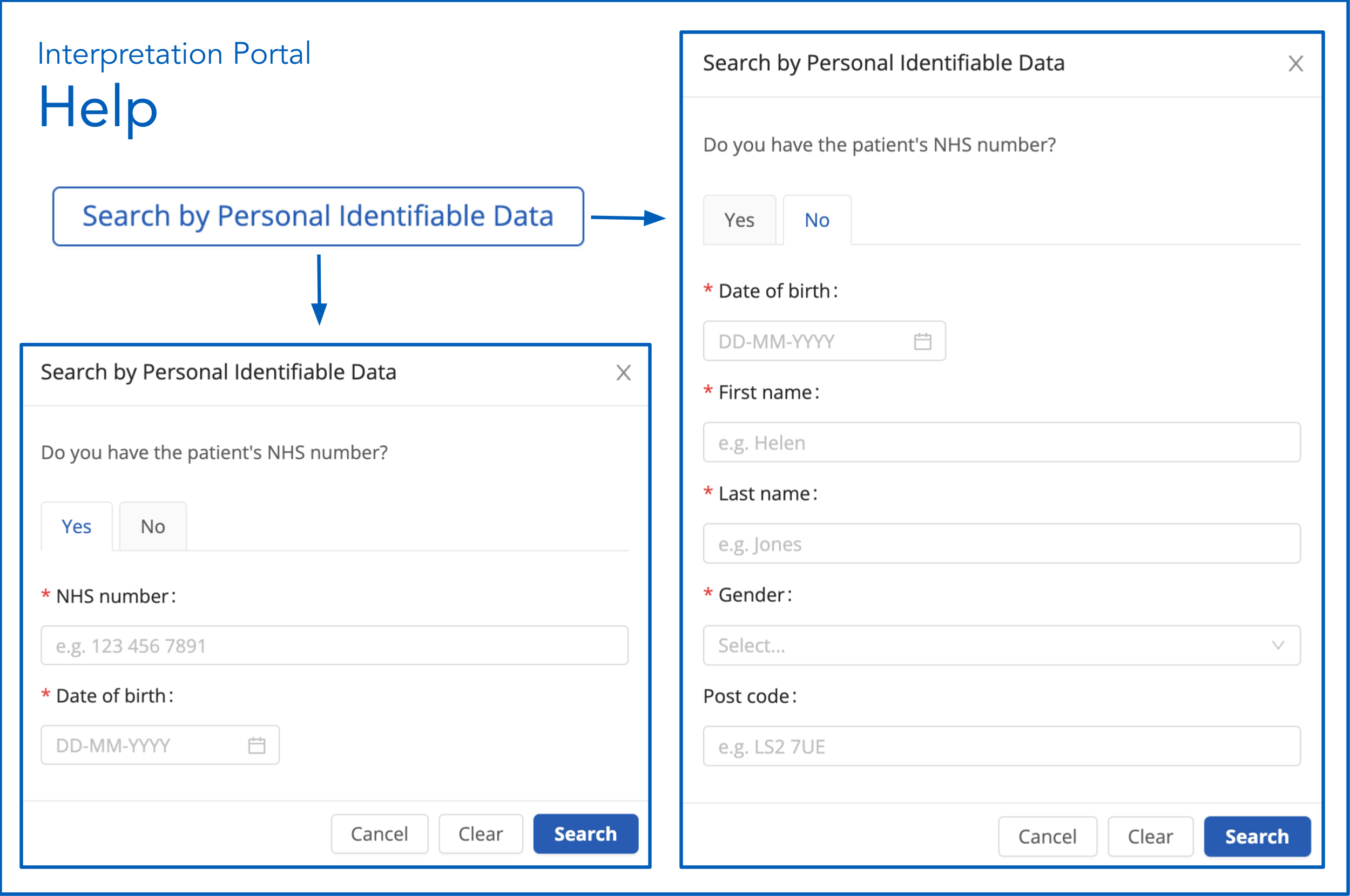How to Use the Referrals Grid¶
This section provides details about the Referrals Grid within the GMS Interpretation Portal, including its main pages and functionalities. Users can access this interface from the landing page of the service or via the Review Referral button in the header of the GMS Interpretation Portal.
Video Tutorial¶
The following video offers a comprehensive overview of the Referrals Grid, including clear instructions on how to use the status tabs, filter and sort functionalities, and search for cases.
Overview¶
The Referrals Grid in the GMS Interpretation Portal serves as the central hub for efficiently managing and reviewing genomic referrals. It provides a comprehensive view of cases, enabling users to effectively track, filter, and access the information required for interpretation.

Key functionalities of the Referrals Grid include:
- Status-based tabs: Cases are logically organized into different tabs based on their current status in the workflow, such as
Ready to Dispatch,To Be Reviewed, andPending Outcomes. This allows users to quickly identify cases requiring attention. - Service Desk access: A direct link to the Genomics England service desk is available, enabling users to easily report issues or request support.
- Case status monitoring: The grid displays the current status of each case, providing users with a clear understanding of its progression through the workflow.
- Filtering and sorting: Users can refine their view of cases by filtering based on type (rare disease, cancer), Genomic Laboratory Hub (GLH) association, and patient choice. Sorting options are available for dates (Healthcare Test Order Service (HTO) Order Date, Decision Support System (DSS) Arrival Date), status, requesting and interpreting organizations, and referral priority, facilitating customized data views.
- Search capabilities: The Rererral Grid enables users to search for specific referrals using various parameters, including personal identifiable data (NHS number, DOB), referral ID, clinical indication, and requesting/interpreting organizations.
- Case information display: Each row in the grid provides essential information about a referral, including the referral ID, patient details, clinical indication, relevant dates, status, case type, and the organizations involved.
- Patient consent information: The grid displays the patient's consent status, categorized as
Green,Amber, orRed, providing important information for the interpretation process.
Why is my case shaded?
The Referrals Grid uses yellow shading to highlight cases with saved draft work.
Filter and Sort¶
The GMS Interpretation Portal offers several ways to filter and sort referrals, enhancing the efficiency of finding necessary cases.
| Filter/Sort Option | Description |
|---|---|
| Filter by Sample Type | By default, all cases (both cancer and rare disease) are displayed. Untick the cancer or rare disease boxes to view only cases of that specific type. |
| Filter by Your Cases | The View My Cases checkbox is selected by default, showing only cases associated with your Genomic Laboratory Hub (GLH). Uncheck this box to view all cases within the GMS. |
| Sort by Dates | Sort referrals by: - HTO Order Date: Date the test was initially ordered in the Healthcare Test Order Service (HTO). - DSS Arrival Date: Date they arrived in the Decision Support System (DSS). |
| Sort by Status | Referrals can be sorted by their current referral (e.g., Ready to Dispatch, To Be Reviewed). |
| Sort by Worfklow Status | Referrals can be sorted by their current workflow status in the DSSs (e.g., Pending Review, In Progress,Awaiting Approval, Submitted ). |
| Sort by Requesting Org. | Sort referrals based on the organization that initially requested the test. |
| Sort by Interpreter Org. | Sort referrals based on the organization responsible for interpreting the test results. |
| Sort by Referral Priority | Referrals are assigned a priority of Routine or Urgent when ordered. This priority is displayed in the Referrals Grid and on the overview pages of rare disease and cancer referrals. |
| Filter by Patient Choice | Patient Choice classification is visible for both Rare Disease and Cancer cases in the GMS Interpretation Portal. This classification indicates the consent status of the patient(s) involved in the referral. |
Search for Cases¶
Users can efficiently search for cases within the Referrals Grid using various parameters. To initiate a search, click the Search by Personal Identifiable Data button located within the Referrals Grid interface. A pop-up box will appear, allowing you to search using:
- NHS number and Date of Birth
- Date of Birth, First name, Last name, and Gender

This search functionality will filter the grid to display only the referrals that match your specified criteria.